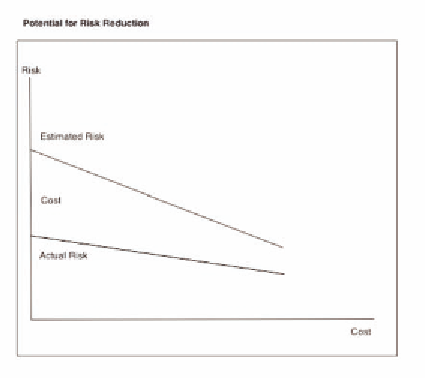Information Technology Reference
In-Depth Information
Figure 4. Risk Reduction
ontology, which will improve the knowledge
management component.
We can support a clear data model by using
Web Service Semantics to define Web Services
properties. Semantics in the form of ontologies can
be used to describe properties such as channels,
constraints, actors, roles, objects, actions, and a
product taxonomy (Dogac, 2006; 2008).
Example: General Web Services
Properties Ontology
•
Payments
•
Constraints
•
Channels
•
Availability
•
Security, trust, and rights
these areas. This model can use Web Services for
program integration and Semantic Web for data
integration and knowledge management.
A peer-to-peer model should be considered,
as it has the following benefits (Androutsellis-
Theotokis, 2004):
•
Service quality
•
Actors
•
Roles
•
Product Taxonomy
◦
Sector
◦
Industry
◦
Company
•
Less cost and risk
◦
Security
•
Better scalability and reliability
•
Clearer trust relationships
Example: Specific Web Services
Properties Ontology Concepts
While various profiles, specifications, and
types of use may be desirable, the key aspects of
these systems as they relate to a new high-level
approach to interactive information designs for
collaborative activity will be the focus of this
article.
An overview of this scheme is presented in
Figure 5.
Stock Market Ontology (Alonso, 2005):
•
Stock
•
StockMarket
•
BuySellOrder
•
BestBuySellOrder
•
ConditionedBuySellOrder
•
LastPrice
knowledge management
•
Session
•
Index
A more fluid and rich collaborative knowledge
management space would be required to effec-
tively manage risk.An advantage of Web Services
is that it can be used to encourage a standardized
•
Volume
•
IndexSession
•
StockWeight
•
Depositary

Search WWH ::

Custom Search